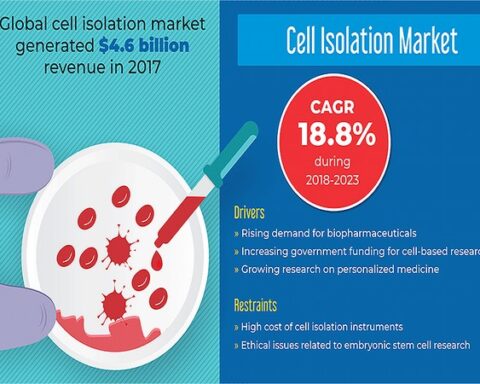Significant opportunities identified in growing and processing raw materials in Asia
HONG KONG – The Good Food Institute Asia-Pacific (GFI APAC) today reveals the “2020 Asia Alt 100” organizations, together with a list of major investors identified as the driving forces for Asia’s rapidly growing alternative protein industry. The raw materials and food production segments present significant opportunities, especially for regional industry players, according to GFI APAC’s analysis.
The inaugural “Asia Alt 100” list published by GFI APAC identifies the 100 top players in Asia’s alternative protein industry, from five building block segments, namely raw materials and ingredients, food production, research and development, corporate partnership, to end products. The research covers players in major markets in Asia including mainland China, Hong Kong, Singapore, Japan and South Korea. (Please see the full list in Appendix I)
Investment in alternative protein has been a major trend in the food industry worldwide in recent years. While alternative protein may still be in its infancy stage in Asia, compared to more mature markets such as the U.S. where plant-based retail sales already reached US$5 billion in value , there are unique opportunities in the growing Asia market to be captured, and both corporates and start-ups are clearly keen to compete for a share in this growing segment. Out of the “2020 Asia Alt 100”, over half (57%) are corporates, 29% are start-ups, while the remaining 14% are academic institutions.
“Coming from a background of very vibrant and diversified food cultures, Asian consumers have a discerning palate and demand for a great variety when it comes to food. For alternative protein to truly become a protein solution for Asia, the industry needs to move beyond importing technologies and brands from Silicon Valley. We need homegrown players who understand and can cater to the local markets’ taste,” says Elaine Siu, Managing Director of GFI Asia Pacific.
“We have already seen local innovators and companies starting to emerge in the past year with huge potential to lead the future growth of this sector. With the Asia Alt 100, we have identified the ones we see as the top disruptors in the industry which have demonstrated that they are seriously committed to, and invested into, growing the alternative protein industry.”
The Asia Alt 100 is presented in GFI APAC’s Asia Alternative Protein Industry Map, which shows who these key players are and how they work together, alongside a list of 35 key investors in the field. Investors are another very important building block propelling the developments of alternative protein in Asia. They come from around and outside of Asia, including Singapore (10), Hong Kong (6), Japan (5), mainland China (4), South Korea (1), other southeast Asian countries (2) and outside of Asia (7). Twenty-eight out of the 35 investors identified are venture capital firms, while the remaining seven are accelerators. (Please refer to Appendix II for the full list of investors).
According to Siu, “While major consumer brands and retailers launching the ‘next plant-based burger’ have been getting the spotlights, as the industry matures, we have seen investors showing increasing interests in raw materials and ingredients suppliers and B2B companies.” Both raw materials and production are integral parts of the alternative protein value chain, but the market is only just catching up on discovering the opportunities that lie in the upper stream. For example, currently Asian countries such as China and Indonesia are heavily growing plant-based protein’s raw materials such as soybean and peas, while approximately 50% of the global supply of soy protein is being processed in mainland China, mainly in the Shandong and Henan regions.
Currently, about half (58%) of the raw material and ingredient suppliers in the 2020 Asia Alt 100 list are originated in Asia. If more homegrown players from Asia will enter the market to leverage the proximity to raw materials and processing capabilities, the industry as a whole can potentially bring down production costs to make alternative protein more affordable to Asian consumers and accelerate the development of the alternative protein sector in Asia.
Siu concludes: “We are currently at an exciting phase of accelerating growth in the alternative protein in Asia. It is expected that more and more Asian companies will enter the industry as the local players start to realize the competitive advantage they have in growing raw materials, processing ingredients, local distribution network, supply chain infrastructure, and of course, in creating products that are tailored to the variety of Asian palate and culture.”
Note:
The team at GFI APAC is in a unique position to have their finger to the pulse of the industry. Day in day out the team is consulted by startups (in many cases even before they formed their founding team), corporates, investors, scientists, and policymakers, free of charge. Being privy to and trusted with invaluable information, the GFI APAC team has the inside track to identify the top players that have demonstrated that they are seriously committed to, and invested into, growing the alternative protein industry, and deserve a place in the “Asia Alt 100” list.
Details of the scope of this study are as follows:
– Regions
Included: Major markets in Asia e.g. Singapore, mainland China, Hong Kong, Japan, South Korea.
Excluded: India
– Businesses
Included: Raw materials and ingredients, food production, research and development, and corporate partners. In line with our goal to increase transparency and awareness of the makers in the supply chain.
Excluded: Retailers and food service providers.
– Local Presence
Included: Companies incorporated in Asia, and companies incorporated outside of Asia but have built a local presence or otherwise invested significantly in Asia.
Excluded: Companies incorporated outside of Asia and without a local presence or significant investment in Asia, notwithstanding that their products may be available in Asia via distributors.
Mapping the Industry
This year, GFI APAC presents the 2020 Asia Alt 100 alongside 35 investors on the Asia Alternative Protein Industry Map to showcase not only the who’s who of this sector but how they work together. Please view the full map at the following link: http://www.gfi-apac.org/asia-alt-100/
About The Good Food Institute (GFI)
The Good Food Institute is an international non-profit building a sustainable, healthy, and just global food system. With unique insight across the scientific, regulatory, industry, and investment landscape, we are accelerating the transition of the world’s food system to alternative proteins using the power of food innovation and markets. For more information, please go to: http://www.gfi-apac.org/








